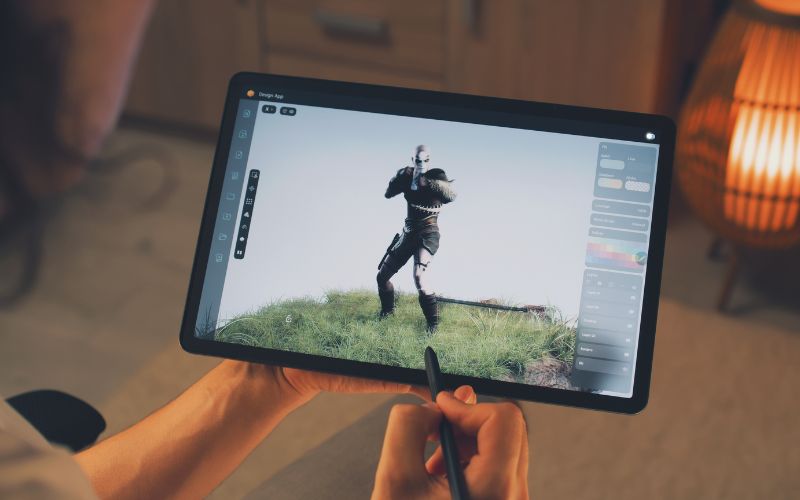Have you ever been transfixed by a digital world where everything looks 3D but is ingeniously crafted in 2D? That’s the pull of isometric animation. Whether it’s a futuristic cityscape or a game interface that looks crisp and captivating, this animation style is a perfect amalgamation of depth, detail, and direction. That’s why aspiring creatives are diving into this fascinating design technique.
Isometric animation isn’t just drawing at angles. It’s about narrative, point of view, and technical sophistication. If you’ve wondered how those clean, cornered worlds are constructed and animated, you’ve come to the right place.
The Most Appealing Features of Isometric Animation
Isometric animation resembles a refined 3D object in 2D. It’s a type of orthographic projection where each axis (x,y,z) is equally foreshortened and axis angles are 120 degrees. It creates an illusion of depth while keeping the clarity and simplicity of 2D design.
This makes isometric animation perfect for video games, architectural walkthroughs, infographics and tech explainers. As a BSc animation degree student, mastering this technique will lead to exciting jobs in motion graphics, gaming, UI/UX design and even virtual reality.
How to Create Isometric Animation Step by Step
Getting started with isometric animation might seem tricky, but it’s easier than you think. With the right steps, you can turn simple shapes into stunning, detailed scenes that pop off the screen. Let’s walk through it together — one step at a time.
Step 1: Become Familiar with Geometry
You need to grasp isometric art’s visual logic before you reach for a pen or a stylus. This style uses 30-degree angles and very uniform scaling. Grids are essential. The isometric grid acts like a canvas, aiding you in drawing structures that appear proportionate and balanced from all angles.
This is where your geometry fundamentals, covered frequently in BSc Animation programs, come into play. An understanding of shapes, lines, and perspective ensures that your designs not only look good but also make sense visually.
Step 2: Start with Sketching
When your grid is ready, begin with simple objects: a box, a staircase, or a lamppost. Build confidence gradually. Don’t animate skyscrapers and hovercars right away. Remember, the key to good isometric animation is in the small details.
Drawing is the blueprint of your animation. You improve your confidence and spatial design knowledge with every object you create. Continue to warp your angles to proportions until they become instinctive.
Step 3: Add Colour and Texture
Now comes the fun part: adding in some colours. Since isometric designs don’t rely on lighting sources, depth must be simulated with colour theory. Choose a palette that makes it easy to distinguish object sides.
Texture and shadows add realism. Bricks with shaded tones render more strongly, so a building becomes more ‘real’. Tire marks and cracks make for an immersive road. This layer of detail is where the BSc animation students can flex their creative muscles and personal style.
Step 4: Animate with Intent
With your isometric scene ready, it’s time to animate. Isometric animation is about intelligent transitions and seamless loops. You may animate elevators moving up and down, cars driving diagonally, or characters walking in isometric space.
Time and distance are key. Keep your animations natural, soft and on purpose. Small things like blinking lights or spinning fans can animate a scene without bombarding the viewer.
Animation principles such as squash and stretch, ease, and anticipation still apply, but they should be adapted to isometric geometry. Then, the technical foundation you usually develop, for instance, on a BSc animation course, becomes more precious than ever.
Step 5: Publish and Present Your Work
This is the moment you show your polished, rendered isometric animation. Make a reel, put it in your portfolio and let it speak. Isometric animation is highly in demand among employers and studios as it tells about your control, planning, and vision.
The industry today leans towards clean and interactive design. Whether it’s digital marketing or gaming, strong isometric skills can give you a real edge.
Step 6: Stay Up to Date with the Latest Research in Isometric Animation
We live in a digitalised world. Brands are always scouting for visual styles that stop the scroll while delivering a message. Isometric animation fits the bill. It’s small, scalable and functional.
For BSc Animation students, it’s about that perfect balance of design and logic, creativity and control. It teaches you to think like a director and design like an architect. It trains your eye for beauty but gives your imagination full rein.
Moople Academy: Where Future Animators Are Shaped
If you want to get a placement in isometric animation, structured training sets you apart. Moople Academy offers industry-focused animation courses in Thane, covering everything from 2D & 3D Animation to Motion Graphics and Visual Effects.
Whether you have just completed Class XII or are looking to change the course of your career, Moople gives you the right platform to begin your journey in isometric animation. Here’s how:
- Expert Faculty: Experience the guidance of veterans from top production studios, design agencies, and OTT platforms.
- Career Support and Placement Assistance: Moople has ties with top-tier companies active in the animation industry today, and students get the chance to appear in company interviews.
- Hands-on Projects & Portfolio Building: Graduates exit with a portfolio of real-world projects that make them job-ready from day one.
Conclusion
Isometric animation is not just a trend but a timeless design style and a trend that will remain. It teaches you the power of balance, the beauty of minimalism, and the impact of storytelling through structure. For students taking a BSc Animation course, this style is the first rung on the ladder to an illustrious creative career.
So grab your sketchpad or grid for motion graphics and redefine your world with animation, one drafter at a time!
FAQs
Q. How long does it take to learn isometric animation?
This depends on your dedication and learning speed. If you practice regularly, the basics can be learned in a few months.
Q. What software do professionals use to do isometric animation?
Professionals tend to use industry-standard tools created for 2D animation and vector illustration.
Q. Does BSc Animation include hands-on isometric animation projects?
Yes, BSc Animation courses have practical projects, which include isometric environments and assets or animations.

